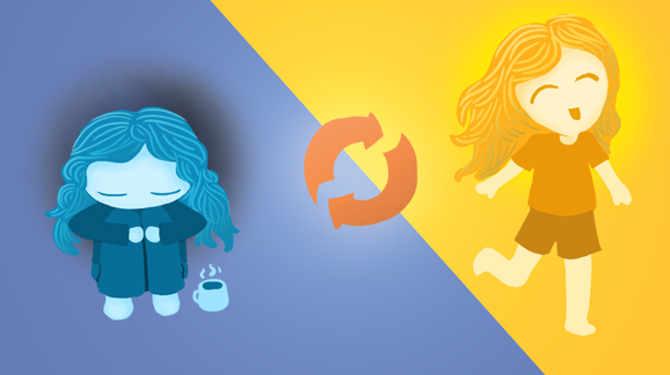Every winter, in particular during December, January and February, around 6% of the US population is affected by SAD, or Seasonal Affective Disorder. This winter, with it’s intense snowstorms in the north and northeast, and unusual number of cloudy days in the southeast I am hearing and seeing more complaints of an unshakeable low mood.
Symptoms of Seasonal Affective Disorder can include:
* tendency to oversleep
* difficulty waking up in the morning,
* moodiness and irritability
* carbohydrate craving
* weight gain
* lack of energy
* difficulty with concentrating
* difficulty completing tasks, and
* a loss of interest in friends, family, and social contacts.
These troubling symptoms, loss of energy and loss of productivity are caused by a chemical imbalance in the hypothalamus due to the lack of sunlight in winter and the shortening of daylight hours and is repeated year after year. For many people this can be a seriously disabling illness that prevents them from functioning normally without on going medical treatment. For others, it is a less severe, but still, debilitating condition causing discomfort and suffering, this is what is known as subsyndromal SAD or ‘winter blues.’
In addition to limited levels of natural sunlight, experts believe that low levels of serotonin and melatonin occur. Due to these changes, it is important to support your wellbeing in many of the same ways you support depression. Psychotherapy is one of the most frequently recommended treatments for both SAD and depression. In addition, there are several natural ways you can support your healing. Once a good relationship is established with a mental health therapist, the most powerful supports you can include are:
~ regulating your blood sugar with regular meals
~ include protein and vegetables in every meal
~ get 30 minutes of exercise 3 times weekly. This stimulates your body to produce endorphins and dopamine, which will help you feel better
~ try to get early morning sunlight, even on cloudy days. This will help reset your pineal gland to produce more melatonin and trigger more serotonin
~ include healthy fats such as Omega-3s with DHA-EPA and vitamin D
~ consider testing to determine the status of your MTHFR gene. An estimated 40% of the population has a genetic combination limiting absorption of folate. Simply including a folate supplement (not folic acid!) can help dramatically.
~ supplements such as 5-HTP, which converts to serotonin, St. John’s Wort, SAMe, and L-Theanine can be helpful. However, when using supplements it is important to go slowly and be very attentive to how your body responds. Working with a healthcare practitioner to ensure you have an effective plan in place can be very helpful.
~ bright light therapy with a light-box.
Knowing what you can accomplish with psychotherapy and the mood supports listed above can empower you to maximize your own healing. However, there are times when medication is necessary. In these instances, which one is used depends on each individual and their specific needs. If necessary, I can consult with your health care provider to help ensure you start with your best fit.
Symptoms of SAD can come on slowly with the change of seasons and sufferers can be struggling significantly without realizing it. Providing support to your friends and loved ones to help them address this often overlooked winter depression can help them get the care they need. Gently and kindly share your concerns, and give examples of the changes you’ve seen. It may initially be a hard conversation, but most people feel isolated and appreciate your effort to bridge the gap.



